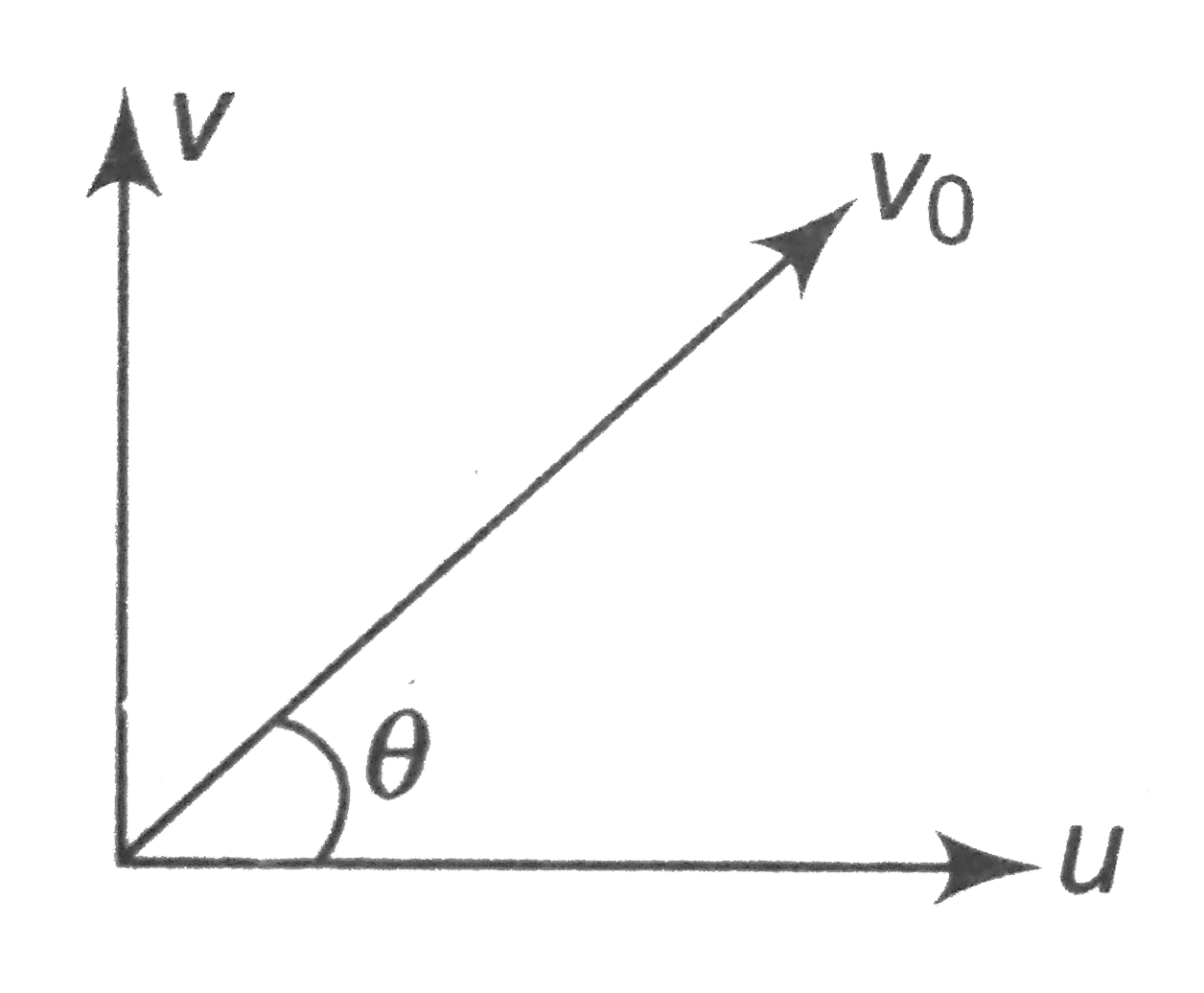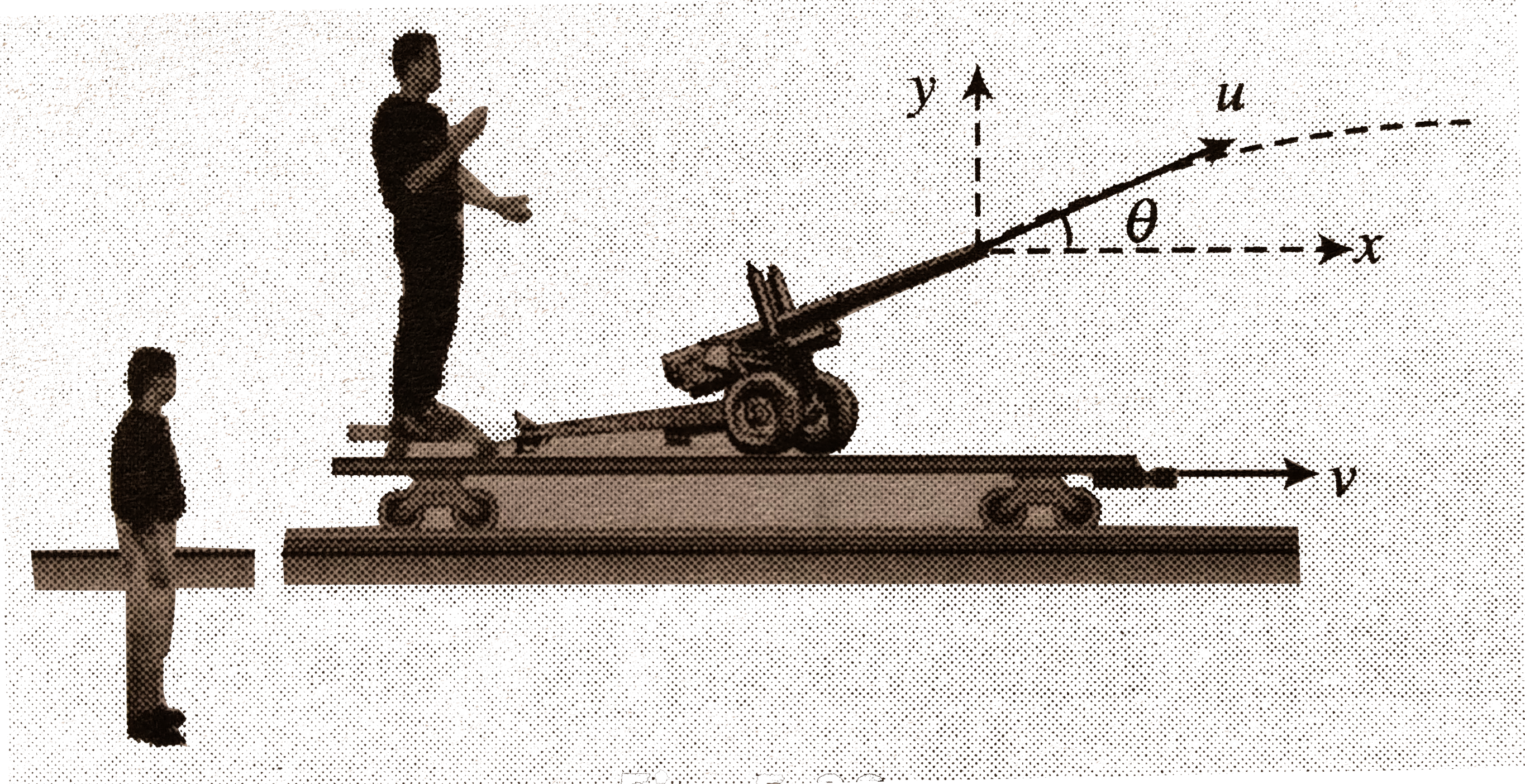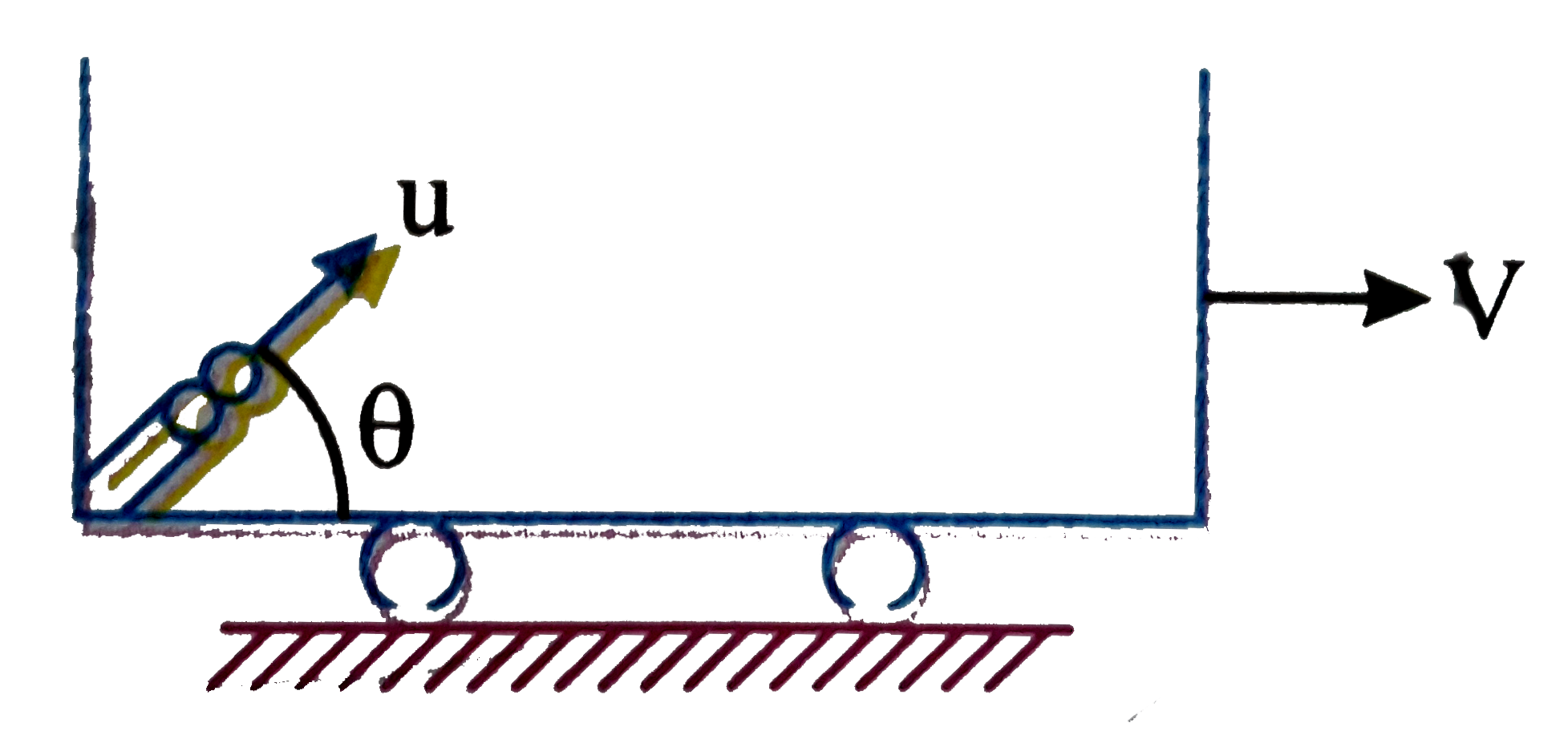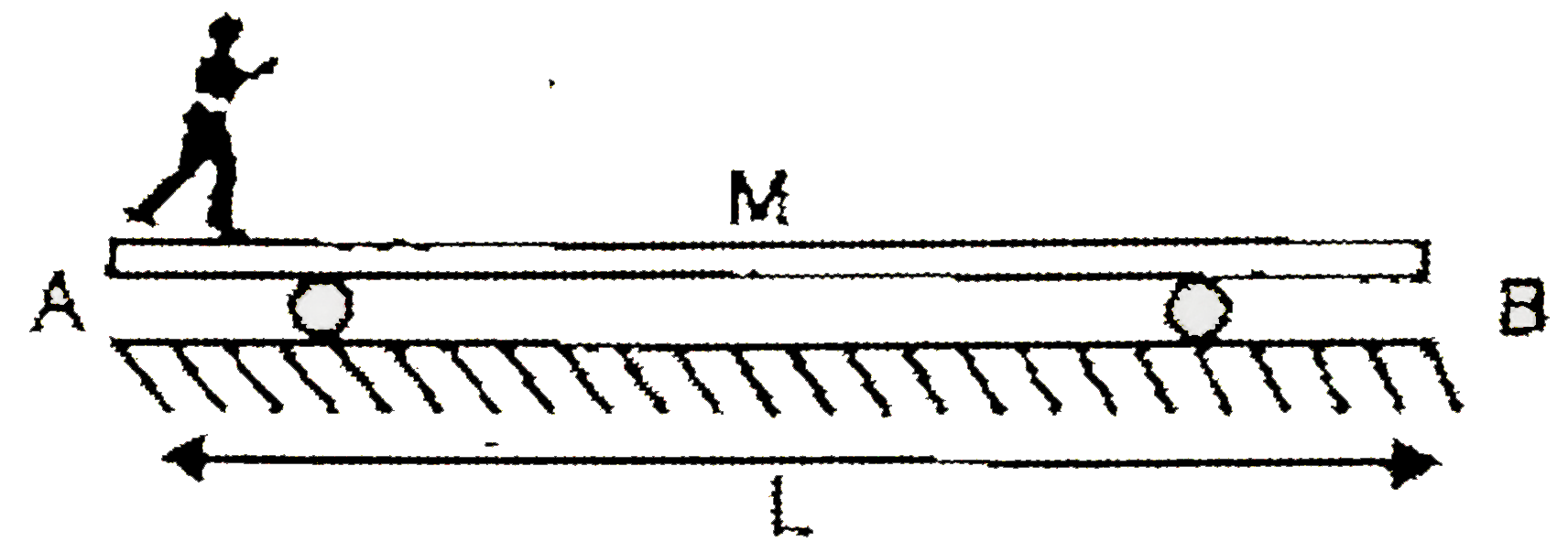A boy projects a stone vertically perpendicular to the trolley car with a speed v. If the trolley car moves with a constant velocity u, the time of flight of the stone is :
u+vg
2vg
2ug
none of these
The correct Answer is:B
v0sinθ=v.......(i)
v0sinθ=u.......(ii)

Time of flight depends on vertical component of velocity.
T=2v0sinθg=2vg
Topper's Solved these Questions
- BOOK - A2ZCHAPTER - MOTION IN TWO DIMENSIONEXERCISE - Projection From Inclined Plane20videos
MOTION IN TWO DIMENSION
- BOOK - A2ZCHAPTER - MOTION IN TWO DIMENSIONEXERCISE - Relative Velocity In Two Dimensions23videos
MOTION IN TWO DIMENSION
- BOOK - A2ZCHAPTER - MOTION IN TWO DIMENSIONEXERCISE - Chapter Test29videos
MOTION IN TWO DIMENSION
- BOOK - A2ZCHAPTER - MOCK TESTEXERCISE - Motion With Constant Acceleration15videos
MOCK TEST
- BOOK - A2ZCHAPTER - NEWTONS LAWS OF MOTIONEXERCISE - Chapter Test30videos
NEWTONS LAWS OF MOTION
Similar Questions
A boy projects a stone vertically upwards and catches it back after 5s. How high the stone goes and with what velocity it was thrown? Also calculate the separation between the highest point and the stone 4 s after it was projected upwards.
Take g=10 m/s2View SolutionA shell is projected from a gun with a muzzle velocity, u. The gun is fitted with a trolly car at an angle θ as shown in (Fig. 5.33). If the trolley car is made to move with constant velocity v towards right, find the
(a) horizontal range of the shell relative to ground.
(b) horizontal range of the shell relative to a person travelling with trolley.
 .View Solution
.View Solution
Knowledge Check
- Question 1 - Select One
A particle is projected form a trolley car with a velocity →v. If the trolley can moves with an acceleration →a towards right, which of the following remain unchanged relative to both ground and trolley car?
 ARangeBMaximum rangeCTime of flightDhorizontal velocity
ARangeBMaximum rangeCTime of flightDhorizontal velocity - Question 2 - Select One
A shell is projected from a gun with a muzzle velocity v.The gun is fitted with a trolley car at an angle θ as shown in the fig. If the trolley car is made to move with constant velocity v towards right, find the horizontal range of the shell relative to ground.
 AR=2usinθ(ucosθ+v)gBR=2usinθ(ucosθ−v)gCR=usinθ(ucosθ+v)gDR=usinθ(ucosθ−v)g
AR=2usinθ(ucosθ+v)gBR=2usinθ(ucosθ−v)gCR=usinθ(ucosθ+v)gDR=usinθ(ucosθ−v)g - Question 3 - Select One or More
A stone is projected vertically up from a point on the ground, with a speed of 20m/s. Plot the variation of followings with time during the entire course of flight –
AVelocityBSpeedCHeight above the groundDdistance travelled
A stone projected vertically up with velocity v from the top of a tower reaches the ground with velocity 2v .The height of the tower is
View SolutionA stone projected vertically up with velocity v from the top of a tower reaches the ground with velocity 2 v The height of the tower
View SolutionA stone with weight W is thrown vertically upward into air with initial speed u. Due to air friction a constant force R acts on the stone, throughout its flight. Find – (a) the maximum height reached and (b) speed of stone on reaching the ground.
View SolutionThe figure shows a man of mass m standing at the end A of a trolley of maas M placed at rest on a smooth horizontal surface. The man starts moving towards the end B with a velocity urel with respect to the trolley. The length of the trolley is L.

When the man starts moving, then the velocity of the trolley v2 with respect to ground will be:View SolutionA stone with weight W is thrown vertically upward into the air with initial velocity v0. If a constant forcef due to air drag acts on the stone throughout the flight & if the maximum height attain by stone is h and velocity when it strikes to the ground is v. Which one is correct?
View Solution

